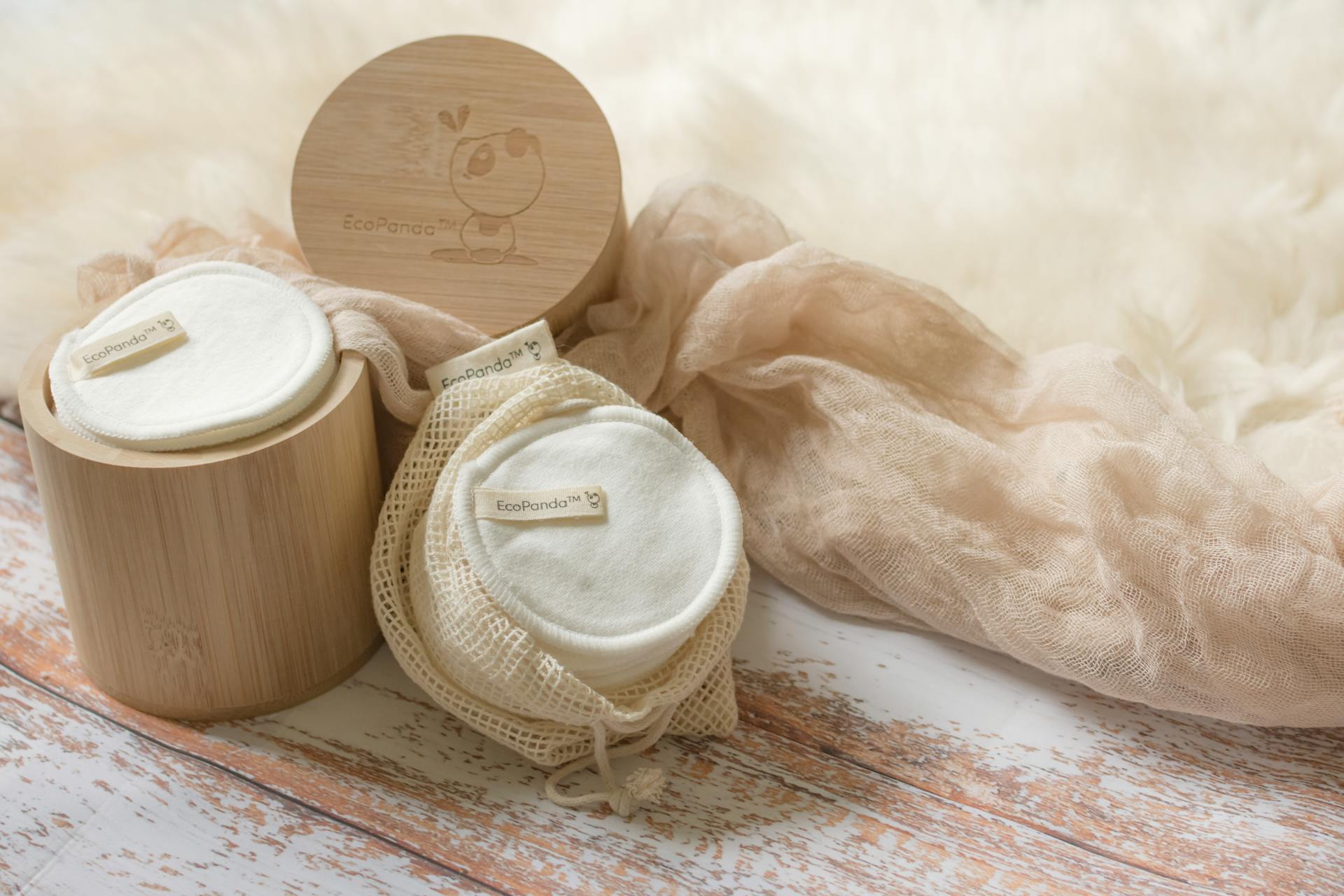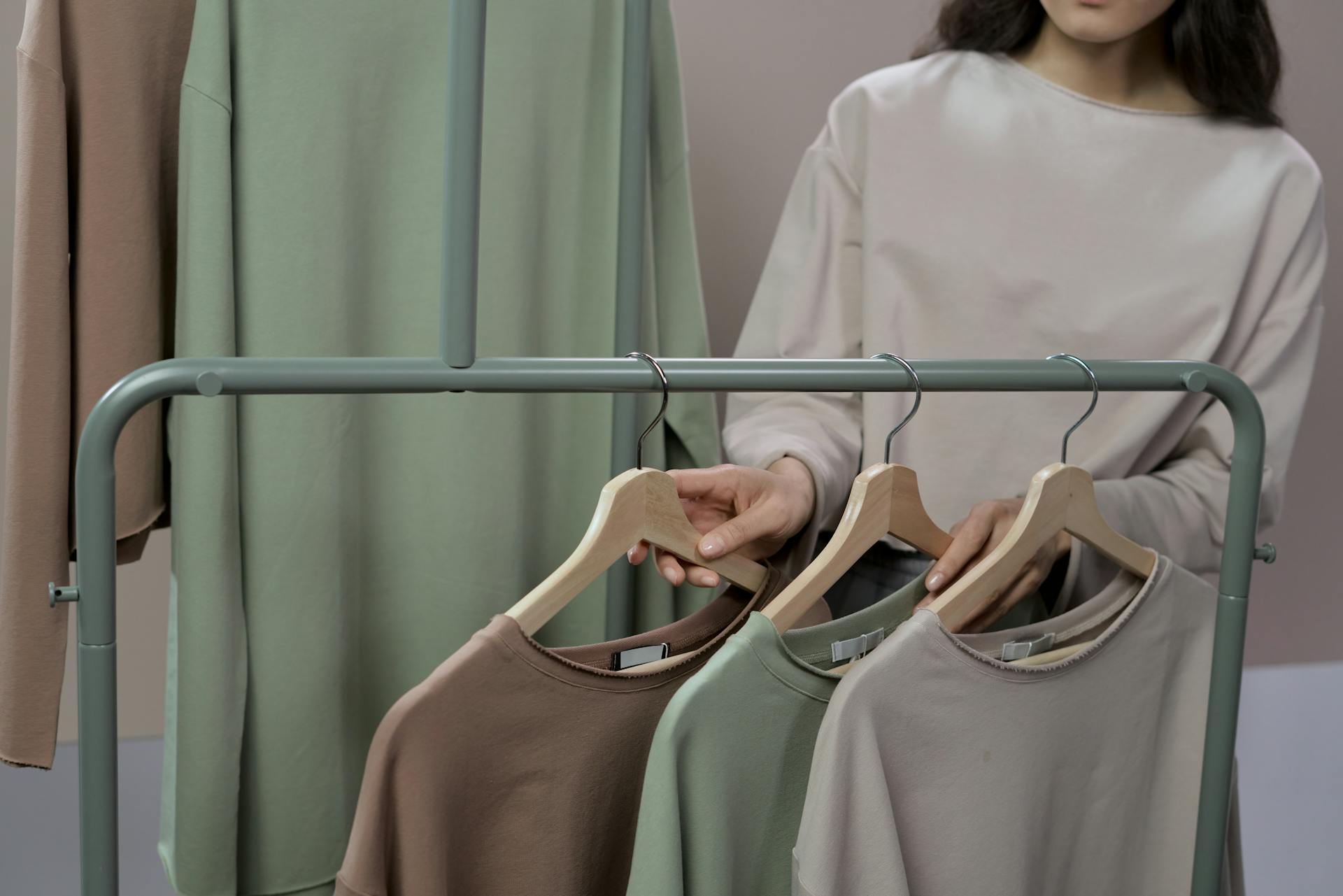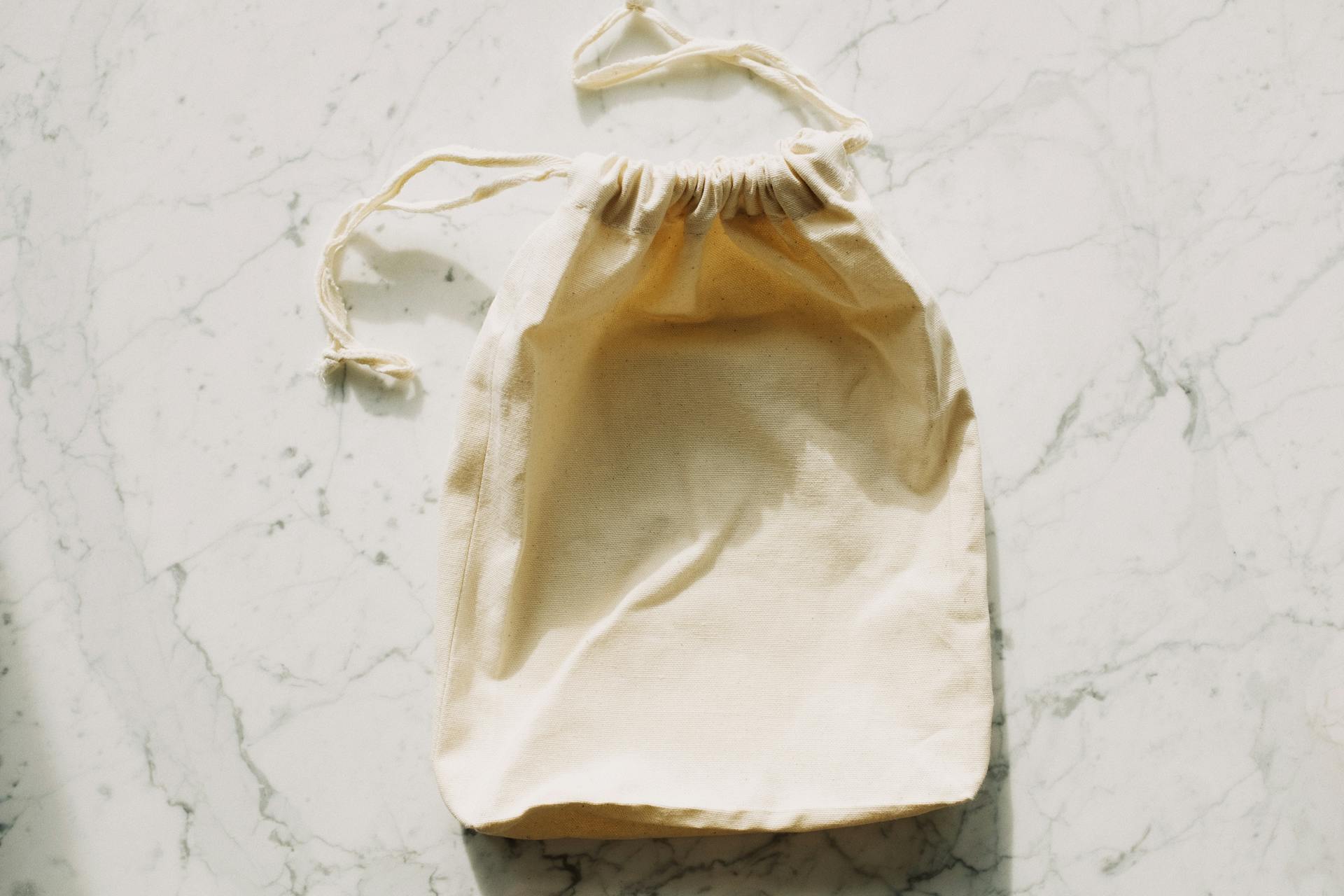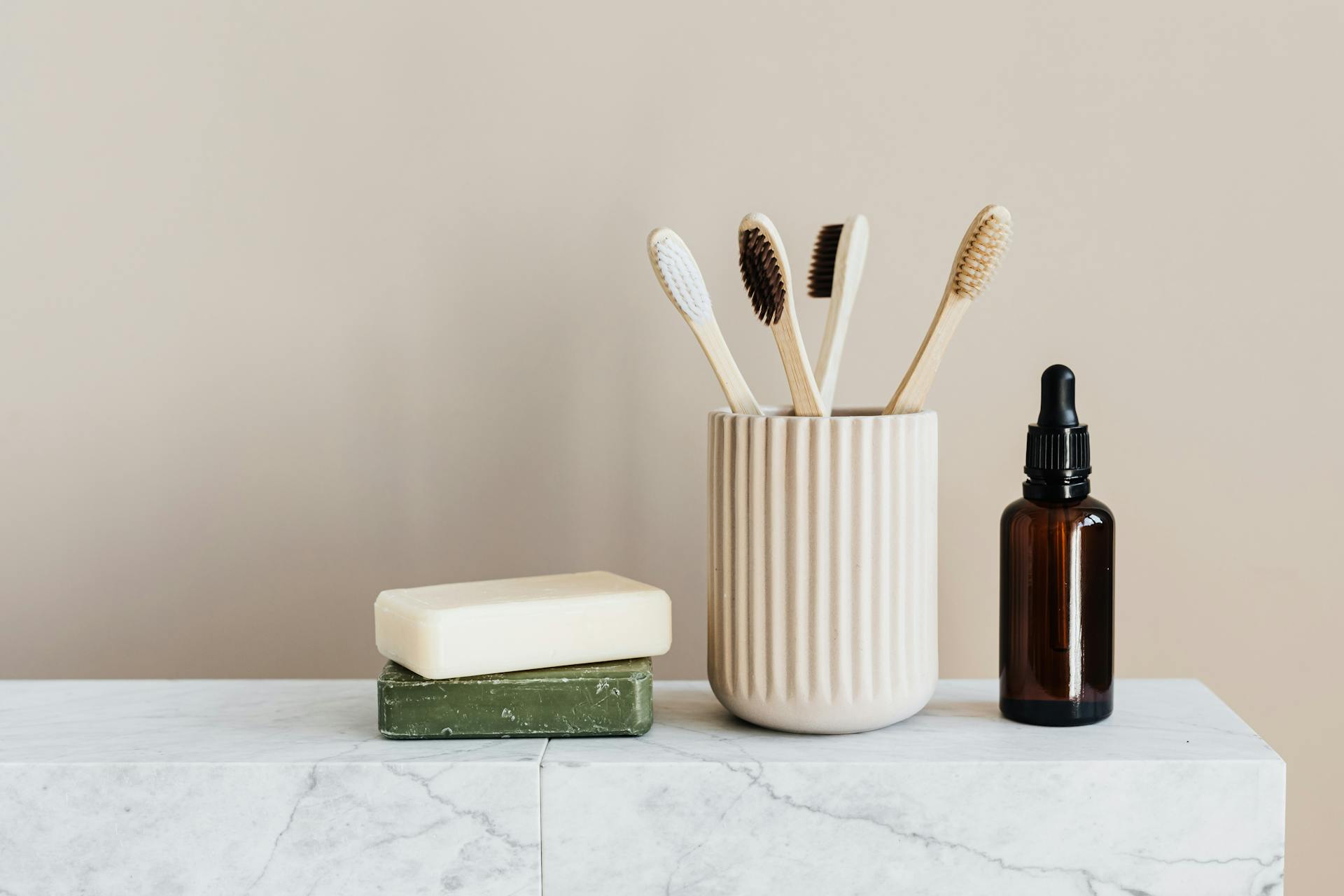
What is lyocell sustainable fabric? As an eco hub for sustainable brands, we wanted to independently review this fabric and answer that very question. Lyocell fabric is a type of rayon made from wood pulp, specifically eucalyptus trees, which are fast-growing and require less water than other crops. This process uses a closed-loop system that recovers and reuses the solvents used in production, making it a more environmentally friendly option than traditional rayon.
As good eco-journalists, we recommend adding lyocell fabric to your radar when discovering new sustainable fabrics. While it may not be as well-known as other materials like organic cotton or recycled polyester, it has been gaining popularity in recent years due to its sustainability factor. As with any product we recommend on our site, we may include affiliate links that earn us a small commission. Learn more about how we support our mission of promoting sustainable fashion by clicking here.
Discovering Lyocell Fabric: Its Origins and Creation

Lyocell fabric has become a popular sustainable cellulosic fabric option in the modern era. Initially developed as a rayon motivated primarily by environmental concerns, it took 7 years of preparatory research before companies like Courtaulds and American Enka were able to commercialize lyocell. In 1980, American Enka decided to focus on developing this new fiber, and things began to take off.
The manufacturing process of lyocell fabric is an interesting one. The origin remains rooted in wood pulp, which can come from various sources such as eucalyptus trees. The fibers are then dissolved in an NMMO (n-methylmorpholine N-oxide) solvent, leaving behind only the remaining cellulose. This solution is then pushed through tiny weenie holes called spinnerets, creating long threads that are washed, dried, and carded into a final product.
In a nutshell, lyocell fabric is an important thing to consider when looking for sustainable options. While the explanation sounds a bit overwhelming at first glance, its creation is fascinating as it uses eco-friendly solvents and processes that result in a durable yet soft fabric.
A fresh viewpoint: Nylon Eco Friendly Sustainable Fabric
1. Is lyocell natural or synthetic?
Lyocell is often referred to as a sustainable fabric, but many people wonder if it is natural or synthetic. The answer lies somewhere in between. Lyocell is a semi-synthetic fiber made from processed cellulosic fiber derived from wood pulp. Although it may not have natural origins like wool, hemp, or cotton, it is far more eco-friendly than man-made fibers like polyester and nylon.
Lyocell is created through an environmentally friendly process that uses non-toxic solvents and has a closed-loop system that recycles up to 99% of the chemicals used in production. This makes lyocell one of the most sustainable vegan alternatives to traditional fabrics. While it may not be entirely natural, its processing methods ensure that it's still relatable to nature and doesn't involve any synthetic substances or fully synthetic fibers.
2. What does lyocell feel like?
Lyocell fabric has a unique feel that is hard to describe with just one word. However, if I had to choose one word, it would be "smooooth." The smooth surface of lyocell fabric makes it feel silky and luxurious against the skin.
If you have sensitive skin that hands feels itchy when wearing certain fabrics, you will love lyocell. It is a non-irritating perfect option for those with sensitive skin who simply enjoy softer fabrics. Lyocell's unique blend of softness and durability makes it an excellent choice for sustainable clothing options.
3. How Much Does Lyocell Fabric Cost?
Lyocell fabric is a sustainable and environmentally friendly option that is becoming increasingly popular. The cost of lyocell fabric is comparable to high-quality cotton fabric, with the average price ranging from $10 to $20 per 1 meter. While this may seem like an abysmal price increase compared to regular cotton fabric costs, it's important to remember that producing lyocell involves technology that is much more sophisticated than traditional cotton processing.
Despite its higher cost, lyocell offers many good things, including unparalleled softness and moisture-wicking properties. Plus, since it's a sustainable option, you can feel good knowing that your purchase was made responsibly. Whether you're looking for ready-made garments or organic cotton alternatives, lyocell fabric is a fantastic choice for anyone who wants to make a positive impact on the environment while still enjoying high-quality clothing.
Intriguing read: Organic Cotton
4. What is Lyocell used for?
Lyocell is a sustainable fabric that is made from wood pulp. It is an eco-friendly material that is increasingly being used in the fashion industry. Products made from Lyocell can be found in the fashion aisle, including activewear such as t-shirts, leggings, and cardigans. Underwear? I'm talking about those stretchy scrunchies, comfy bed sheets, and soft towels!
Lyocell has become popular because it offers a variety of benefits. It is soft and comfortable like cotton but more durable and moisture-wicking than other fabrics. It's perfect for athletic wear or anything you want to keep feeling fresh all day long. Additionally, it is a sustainable option since it is made from renewable resources and requires less water than other traditional textiles like cotton. Overall, Lyocell's versatility makes it an excellent choice for anyone looking for sustainable clothing options!
You might like: Sustainable and Ethical Fashion
Discover the Differences Between Lyocell and Modal Fabrics
Tencel Lyocell and Tencel Modal are both sustainable rayon options made out of wood pulp. However, the way they are processed differs. Lyocell is created using a closed-loop process that uses less water and fewer chemicals, making it an organic solution for creating cellulose textiles. Sodium hydroxide is used in Lenzings procedures to make modal, which is similar to lyocell but requires more energy and water consumption. Many celebrate Tencel Modal due to its silky feel, while others prefer lyocell for its eco-friendly production.
Discover the Amazing Properties of Lyocell Fabric!
Lyocell fabric is a semi-synthetic fiber made from plant-based fibers derived primarily from eucalyptus cellulose fibers. Unlike other natural raw materials made into cellulosic regenerated fibers, lyocell is a semi-synthetic fabric produced through an eco-friendly production process that requires soaking wood cellulose in a non-toxic solution. This miraculous fabric has many eco-friendly qualities that make it stand out from other fabrics.
Producers acquire lyocell by extracting wood pulp from eucalyptus trees, birch or other types of wood. The wood chips are then treated with a solvent to produce tencel branded lyocell fibers which are used to manufacture different products. Lenzing AG, the world's largest lyocell fiber manufacturer, owns the Tencel brand which includes Tencel Modal and other semi-synthetic textiles asides from Tencel Lyocell.
The lyocell production process ensures that manufacturers make use of sustainable processes that are beneficial to the environment. This makes it an eco-friendly alternative to rayon fabric and other synthetic fabrics. It's also incredibly soft and gentle on skin, making it perfect for people who have sensitive skin or allergies. In essence, lyocell fabric is not only good for the environment but it's also great for your health!
1. Where is lyocell used?
Lyocell, also known as Tencel lyocell, is a sustainable fabric that has become increasingly popular. This eco-friendly material is being used in a variety of products, from sustainable activewear to eucalyptus sheets. Many fashion brands recognize Tencel's softness, durability and breathability and are starting to mix it with other fabrics such as cotton, merino wool or nylon. Additionally, bamboo lyocell blends are also gaining recognition as an alternative to synthetic fibers.
Manufacturers are mixing Tencel fibers with other fabrics to create new textiles that have eco-friendly features. Lenzing's method of creating lyocell from eucalyptus wood pulp sourced sustainably managed sources that Lenzing certifies under the United States Department of Agriculture (USDA) standard for sustainable cotton makes this material very attractive for environmentally conscious consumers. You can find Lyocell not only in fashion but also in medical dressings and conveyor belts among others. It's exciting to see our consumption habits shifting towards more responsible and sustainable choices!
Broaden your view: Regenerative Agriculture Sustainable Fashion
How to Nourish Your Lyocell Garments with Care

Lyocell garments are made from natural materials and are considered a sustainable fabric, but they require special care to maintain their quality. Unlike other fabrics, you can typically expect very little lyocell shrink when you wash lyocell garments. However, because it is a delicate material, it is best to use cold water and a gentle cycle when washing. You should also avoid harsh detergents and instead opt for gentle detergent that won't damage the fibers.
After washing your lyocell garment, it is important to drip dry them rather than putting them in the dryer. This will help prevent any damage or shrinking that could occur during the drying process. Once your clothes are dry, pay attention when ironing them - use a warm iron and avoid using conditioners or ironing sprays as these may cause damage to the fabric. By taking care of your lyocell garments properly, you can extend their lifespan while also reducing waste in the manufacturing processes.
You might like: Avoid Microplastics
The Ultimate Guide to Maintaining Your Lyocell Fabric

Lyocell clothing is a sustainable fabric made from wood pulp. It's environmentally friendly, skin-friendly, and perfect for all seasons. Maintaining your lyocell pieces is important to avoid damage and keep them looking new.
When it comes to cleaning, machine washing on a delicate cycle with gentle laundry detergent or an eco-friendly wool-wash detergent is recommended. If you have the option, try using the wool-wash cycle on your machine instead of the regular one. This will ensure that your lyocell clothing doesn't get damaged during the washing process.
Avoid ironing your lyocell clothing as much as possible. Instead, gently steam it on a warm setting (silk mode works great) to remove any wrinkles or creases. This will help maintain the softness and texture of your lyocell fabric. By following these simple steps, you can ensure that your tencel lyocell pieces stay in top condition for years to come!
A unique perspective: Recycled and Upcycled Clothing
The Environmental Impact of Lyocell: What You Need to Know
One big concern when it comes to sustainable fabrics is the impact they have on the environment. When it comes to lyocell, one of the main things that impacts the environment is where the eucalyptus wood used to make it comes from. While some lyocell is made from sustainably managed forests, others may come from random endangered forests.
Eucalyptus trees are used for lyocell production because they grow quickly and don't require pesticides. However, for every tree cut down, a new one needs to be planted in its place. The entire process of turning eucalyptus wood pulp into lyocell also requires an nmmo solvent - unlike traditional sodium hydroxide solvents - but this solvent is part of a closed-loop process where it can be reused multiple times and closely measured to ensure minimal ecological footprint.
Overall, garments made from lyocell can be a sustainable choice if you choose brands that prioritize sustainably managed forests and use responsible manufacturing processes. By doing so, you can help support an industry that values both environmental sustainability and ethical production practices.
1. Pros of Lyocell
Eco-friendly pros are the primary reason why Lyocell is becoming increasingly popular. This highly sustainable fiber is obtained from sustainable sources such as bamboo pulp, wood pulp, and eucalyptus trees. The closed-loop process used to produce Lyocell is environmentally friendly because it recycles water and solvents, reducing the amount of waste created during production. Unlike other fabrics that require pesticides, Lyocell is made from natural fibers without the use of harmful chemicals. It's a compostable biodegradable material that minimizes its impact on the environment. Additionally, its smooth texture perfectly suitable for sensitive skin makes it ideal for individuals who want a delicate fabric that's pretty long-lasting strong.
Sports enthusiasts love Lyocell because of its moisture management properties, making it perfect for outdoor adventures or making activewear. The highly breathable fiber is well-known for absorbing moisture and keeping you dry even during physical activities. It's also resistant to bacteria growth which makes it a great antibacterial fabric that provides physical protection against harmful pathogens. Dyeing Lyocell with non-highly toxic dyes creates an eco-friendly product when combined with organic cotton. Overall, Lyocell has numerous benefits compared to other fabrics, and if you're looking for a durable textile that combines comfort with sustainability then this is one option you should consider.
2. Cons of Lyocell
Main Con of Lyocell
One main con of lyocell is that it can be pricey compared to other mass-produced fibers due to its production costs. However, it's important to note that lyocell is highly sustainable and fully compostable, which makes it worth the investment in the long run.
Delicate Fiber
Another downside of lyocell is that this delicate fiber requires specific care when washing and drying. While this may sound like a big deal, it's simply a matter of following the specific cares outlined in the FAQ section of your clothing label. For example, avoid washing at high temperatures and opt for gentle detergents to ensure your clothes last as long as possible. It's also worth noting that lyocell has high energy consumption welp in its production process, which adds to its overall environmental impact.
Frequently Asked Questions
Is Lyocell safe?
Yes, Lyocell is safe for human use. It is a biodegradable and eco-friendly fabric made from natural materials that are processed using environmentally friendly methods, making it a sustainable choice.
Is Lyocell Rayon better than cotton?
Lyocell Rayon is considered better than cotton due to its superior moisture-wicking properties, sustainability, and softness. It also has a smoother texture and is less prone to wrinkling than cotton.
What is Lyocell material?
Lyocell material is a type of cellulose fiber made from wood pulp that is processed using a closed-loop system, meaning the chemicals used in production are recycled. It's a sustainable and eco-friendly alternative to traditional fabrics like cotton and polyester.
Is lyocell a sustainable fabric?
Yes, lyocell is a sustainable fabric made from wood pulp and produced in a closed-loop process that minimizes waste and uses non-toxic chemicals.
What is the difference between lyocell and polyester?
Lyocell is a natural fiber made from wood pulp, while polyester is a synthetic fiber made from petroleum. Lyocell is more eco-friendly and breathable, while polyester is more durable and wrinkle-resistant.
Featured Images: pexels.com


